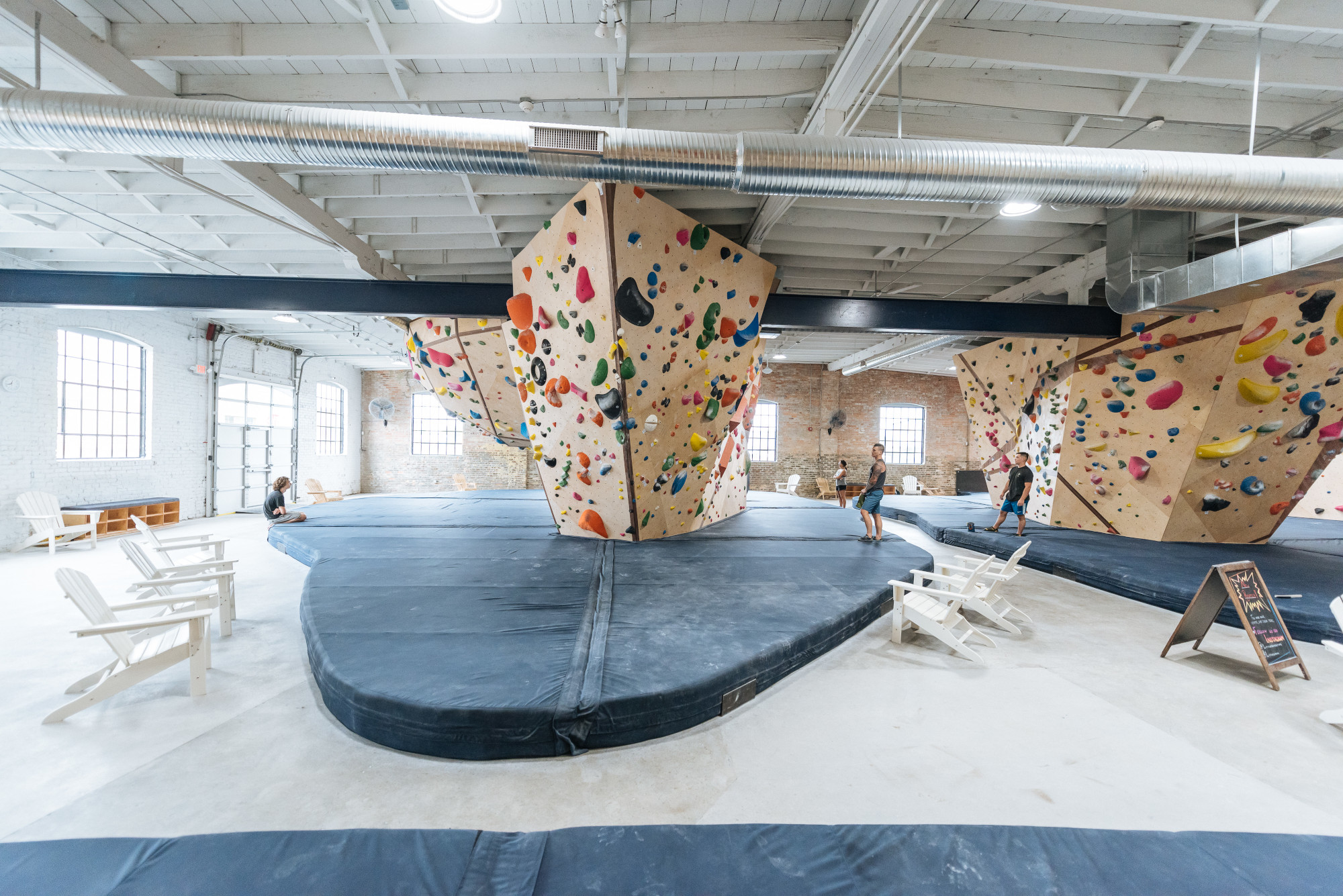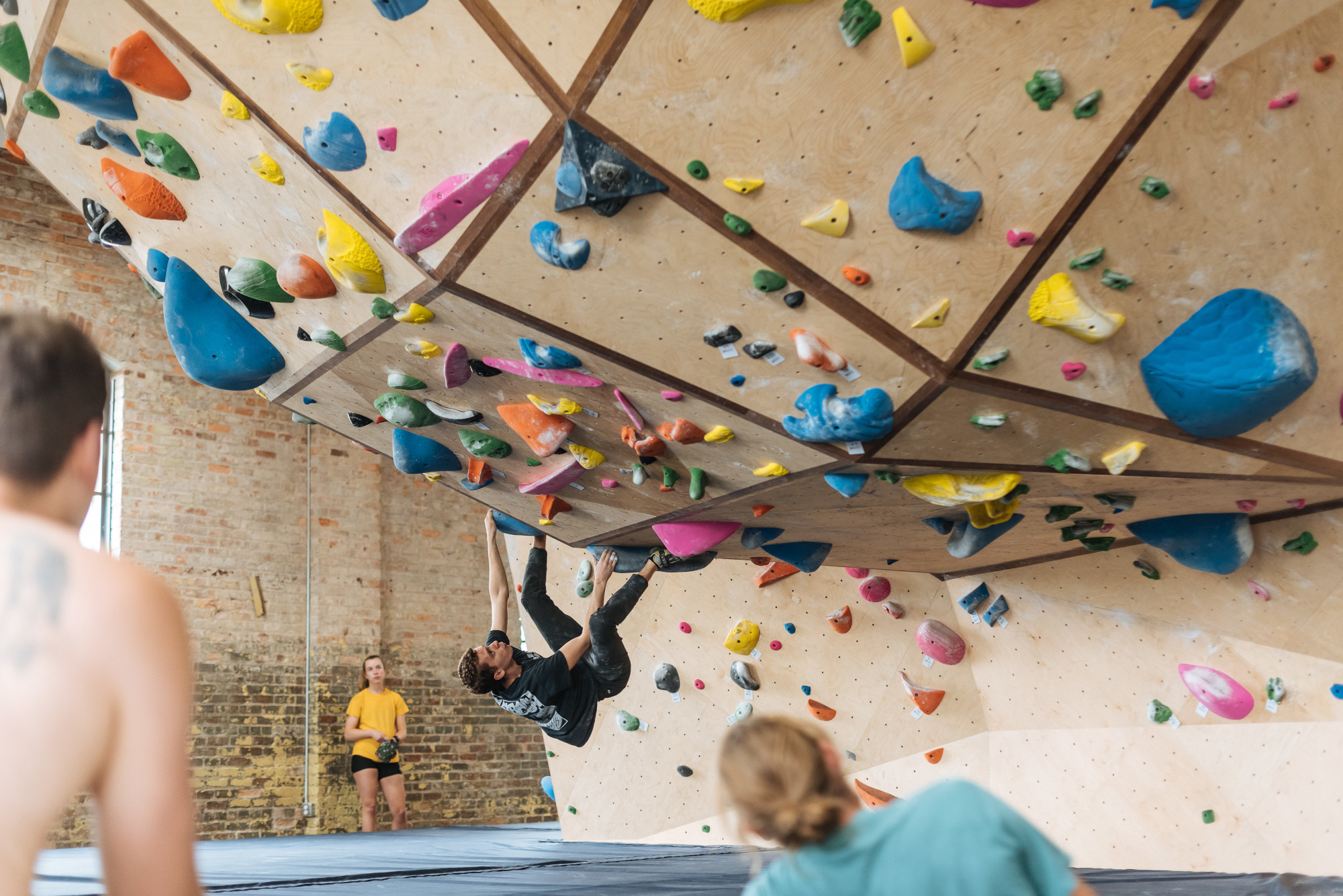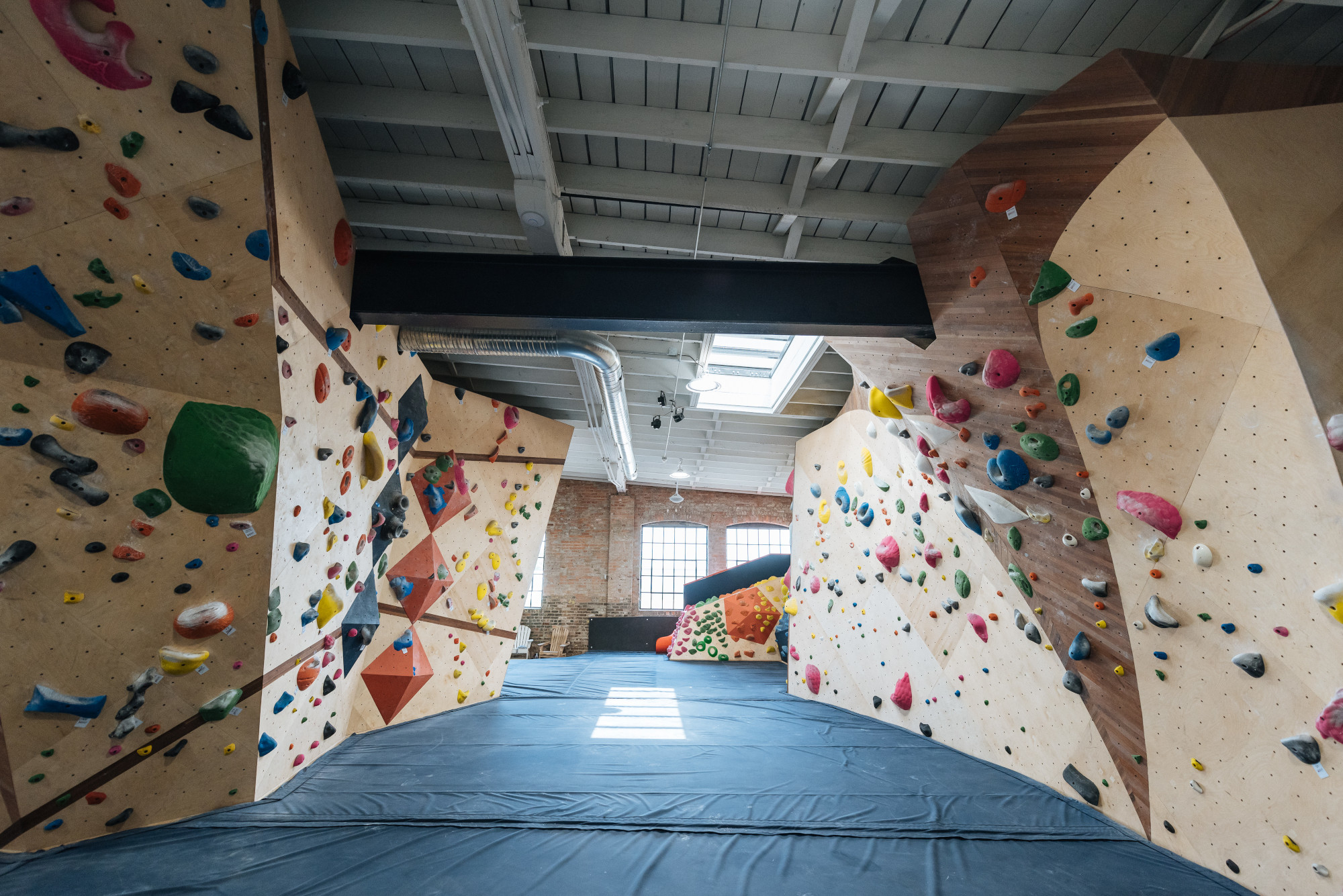Norfolk, VA is home to the world’s largest naval base and the North American Headquarters for NATO. Its 247,000 residents enjoy 144 miles of shoreline along scenic lakes, rivers and the Chesapeake Bay. Although outdoor climbing in the area is limited, there is a dedicated group that frequents the Red and New River Gorges in “short” six- or nine-hour drives.
Though there is a passionate climbing group in the area, Latitude Climbing and Fitness – after opening its doors on June 21, 2018 – focuses on introducing people to the sport. With its unique bouldering-only walls, like the Globe, and programs such as bouldering leagues, youth classes, yoga and more, it has since became a hub for and fostered the local climbing community.
We sat down with co-owner Marisa Beck to talk about Latitude’s mission, holistic approach and plans for expansion.
Vertical Solutions: How did you end up in Virginia’s Norfolk area?
Marisa Beck: I grew up outside of Boston, but after college traveled with my husband and business partner Matt to San Diego because he’s active duty in the military. I got into nursing school on the east coast and Matt had orders, so we both moved here.
Describe your climbing experience and history.
My brother was really into it in high school. He climbed at this barn that was converted into a climbing gym. So, I was loosely familiar with the sport because of it. In college, I went to a couple of gyms near my house and really enjoyed it. And when I moved to San Diego, I got a good foothold and enjoyed the sport on a day-to-day basis.
Before opening the gym, did you, Matt, or your other business partner Jason McKenzie have any previous business experience?
None of us had ever opened our own business. I had a Master’s in organizational management and worked for plenty of other businesses. Matt has been active duty in the Navy for 11 years now and Jason worked at an accounting firm in Norfolk. Opening a business was new and novel.
How did past experiences and strengths of all the partners play off each other to create a successful gym?
Better than we could’ve imagined!
Jason has done a lot in the finance world – he was instrumental with the small business loan and does accounting for the gym daily.
I decided to quit my nursing job to run the gym full time as the general manager. My management skills came into play in terms of staffing, training, inventory and the technical side of RGP.
Matt’s background is in operations, so he was key in identifying programs for HR, payroll and staff scheduling. We’ve also realized that when you own a small business, everything you don’t do yourself costs money. So, Matt has gotten into web design and other areas that allow us to cut costs.
What was the process like to get funding for your project?
It required us to all come up with some capital as a down payment for the SBA loan. Navigating the SBA is not a fun, easy process. But Jason’s background in finance was a huge help. We’re opening another facility in Virginia Beach, so it’ll be nice to have one SBA loan under our belt when we apply for the next.
What was the main goal when setting out to create Latitude?
The main goal of Latitude is to be a modern climbing and fitness facility that can improve peoples’ health and wellness.
I was a nurse, so health is important to me. I worked a lot in the ICU and saw that if people had made different choices, they maybe wouldn’t have met their demise so early or untimely.
We wanted to create a space where people can learn how to create healthy habits for themselves and make habits last for their lifetime.
Why bouldering only?
Hampton Roads is a huge military area so there are some restrictions with building height due to air traffic. Getting a tall building is uncommon.
There is also cost savings in terms of not building higher walls, which made the project more accessible for us.
And of course, bouldering is the best sport ever! I’ve loved bouldering ever since I got into climbing. It’s so accessible: You just need shoes and chalk and you can hit the wall as much or as little as you want. You don’t need a partner and you’re not relying on other things like a harness, a forgotten ATC, etcetera. You don’t run into those barriers with bouldering. And the powerful style of climbing spoke to me a little more.
Describe the hardest part about opening your gym.
Everything went relatively smoothly – our gym was one of the fastest to ever open in the country. We opened in six and a half months. Part of that was making an insane amount of decisions in a short amount of time. Because we all work really well together, it was easy for us to make decisions after very short conversations.
But we certainly ran into roadblocks. One of the main features that VS built is the Globe – a large, overhanging dome-shaped climbing wall. It was so big and heavy that it required a footer, which we weren’t anticipating. VS had to dig out a lot of concrete and pour about 10 tons back in after setting rebar and other support. It was an unanticipated cost and kicked back the timeline a bit.
Another big hurdle was the historic building. We love the feel, but it created some issues like having all our walls be freestanding because of historic regulations. Little things like that became big cost items for us, but it was a part of the process.
Do you take inspiration from other gyms?
I love going to other gyms. It’s been neat to see what we like and how that contributed to us building to what we have now. Latitude has been an opportunity for us to put all our creative energy and make it something we wanted. The design, wall color, flooring and yoga studio were all chosen by me, Matt and Jason.
How does Latitude separate itself from other climbing gyms and fitness centers in the area?
We have Habit flooring and an HVAC system. And we keep our facility really clean, which is important to us. We have modern amenities like locker rooms, showers, lockable lockers, a yoga studio, fitness facility and group fitness classes. Our offerings are one of the greatest things we’re able to provide for our members.
How did you approach Latitude’s design?
Jaime from VS came out and we sat around a projector. We started building things before putting them on screen. We probably went through 15 iterations on paper before making it on SketchUp.
The front area is home to the fitness area, locker rooms, gaming area and other non-climbing things. We just played around with it until it felt right to us.
Virginia Beach and Norfolk are far from outdoor climbing. Describe the local climbing scene and how your gym reflects the culture and community.
We have the heart of the climbing community here at Latitude. We have a lot of dedicated climbers that go to the New and Red River Gorge every weekend, as well as Seneca Rocks and some places in North Carolina.
But the bigger part for Latitude is getting people to fall in love with indoor climbing because of the accessibility. Most of the outdoor climbing happens to be about five to eight hours away depending where you go.
We host two comps per year and partner with the Access Fund. Our sales and benefits help promote the Access Fund and get people engaged with outdoor climbing.
How did you know you were ready to open another climbing gym?
Our goal was to be able to open another gym as soon as possible – we always had that in the back of our mind. We pulled the trigger as soon as we could. Part of it was finding the right location, but the next location is in an outdoor strip mall of sorts. We’re knocking down what’s currently there and building the facility.
What will be different about your next location?
It will be similar in terms of square footage, but will include bouldering, top roping, lead and speed climbing.
And it’s far enough away where it will serve the current community in addition to expanding into a newer one.
What did you learn from the first Latitude that you’ll apply to your next project?
The best advice we got from VS was to treat the gym as a third space. People have a home and an office and a third space.
A lot of climbing gyms like to pack in so much climbing. While that’s certainly what it’s about, it’s also about community. We give our members space to climb and know one another. We have a hangout area and facilitate the social aspects of the sport.
Why did you decide to go with Vertical Solutions for helping to build your gym?
We initially went to Brooklyn Boulders Somerville and the walls looked clean and artistic. That drew us in.
And we had a phenomenal experience with VS. We bought the consultation package and were able to verbalize our vision.
They clearly illustrated to us that they were the right company to make our dream a reality. It sounds corny, but it’s true. There wasn’t really a doubt in my mind that VS wasn’t the right team to do it. Everything from wall design to retail choices, VS is an incredible resource to us and they’re very accessible.
What’s next?
We’re most excited about expanding our offerings and capturing more people. It’s huge for us to promote health and wellness to the community. The sky is the limit!\
--
This interview has been edited for grammar and brevity.
Visit Latitude Climbing and Fitness’ website for more information.
If you need help with any aspect of building your climbing gym, from business consulting to opening day and beyond, please don’t hesitate to contact us!




